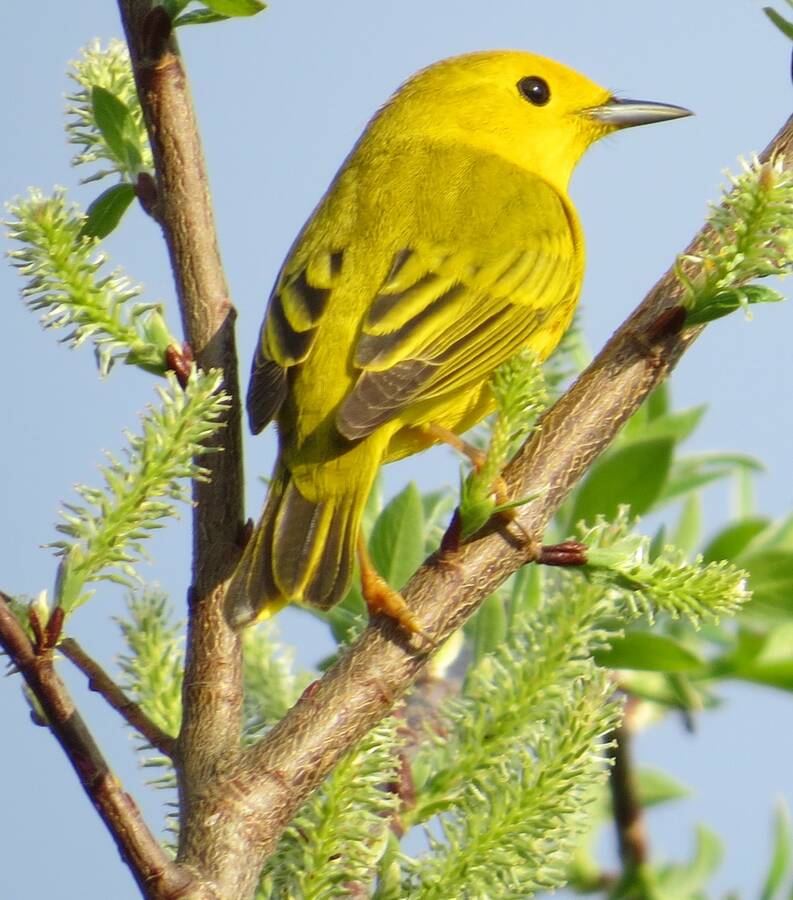
2022-05-25
Forestry and the demise of birds
by JAMES HIRTLEI recently read an article by Matt Betts, who is an honours research associate at the University of New Brunswick in Fredericton and also a forestry professor at the Oregon State University.
The article was eye opening. It states that clear-cutting and other practices have shrunk the older forests in the Maritimes, leading to between 33 million and 104 million bird deaths from 1985 to 2020.
Nine bird species have declined at a rate of 30 per cent or more over the past 10 years, which means that these species are considered threatened. University of Oregon researchers tracked habitat loss and how it affected 54 common bird populations in Prince Edward Island, Nova Scotia and New Brunswick.
The golden-crowned kinglet, one of North America's smallest songbirds, is known for its grey belly, orange crest and the ability to survive in harsh winter climates. Researchers found that the golden-crowned kinglet suffered the sharpest decline in breeding habitat loss at 33 per cent.
Overall, the study found that 66 per cent of common bird species have experienced habitat loss. Most of the loss occurred in older forests, which have experienced clear-cutting followed by the replanting of only one tree species that would be ideal for future harvesting.
May 14 was the Global Big Day for birding. This is what used to be referred to as the Spring Migration Count. Along with Adam Hennessy I spent 13 hours of birding over 115 km. We tallied 58 species for the day and I added 14 new species to my year list. We had 13 species of warblers which included the magnolia, yellow-rumped, palm, northern parula, yellow, chestnut-sided, black-throated green, black and white, Nashville, blackburnian, ovenbird, American redstart, and pine.
Seeing four broad-winged hawks in a day was a rarity and hearing a sora rail was a treat. Numbers for lots of species that we did see were really low compared to other years, especially for American robins. We also had only one ruby-crowned kinglet, which is a species whose numbers have drastically fallen over the past 10 years. An alder flycatcher was an early migrant, which I had never seen this early before. It is the first year without my seeing a red-tailed hawk on the count day.
On April 30, Steven Shewchuk of Rose Bay reported that his first batch of black-capped chickadees fledged from the nest box. As of May 18, the chickadees were sitting on a second nesting of eggs. On May 9, Marjorie Zwicker of Auburndale had a ruby-throated hummingbird. On May 12, Marg Millard of White Point reported two males and one female ruby-throated hummingbird.
I saw my first one at my feeder in LaHave on May 15. David Walmark of Kingsburg had his first show on May 17. David reports five American tree swallows active around his nest boxes. He sees American goldfinches and purple finches around his house.
Marjorie Zwicker of Auburndale noted a dark-eyed junco on May 16. Sheila Wilneff of Bridgewater sighted a beautiful bird, brown and white with black and white stripes around the neck and a white chest. This bird was outside of the apartment building where she lives. There is a small pond there where the bird was bathing and feeding along the edge. When the bird flapped it's wings there seemed to be a golden colour under the wing. Her bird was a killdeer, which is always a pleasure to watch when finding one. On May 13, Barbara McLean spotted six common terns at Westhaver Beach in Mader's Cove.
Marg Millard sighted a turkey vulture near the Wiles Lake Nursery and Bakery on May 6. On May 12, she saw a northern parula in an apple tree in her yard at White Point. Steven Hiltz photographed a mallard with 10 young on Wentzell's Lake at Back Centre that same day. On May 14 there was a female mallard with 11 young at Second Peninsula.
Another report came from the Brookside Cemetery in Bridgewater of a female mallard with several young ones. Michael MacDonald reported a leucistic blue jay at Dublin Shore. Photos show the bird as resembling the one that overwintered at East LaHave.
There were lots of reports of migrants across the province. An eastern kingbird was observed at Clam Point, on Cape Sable Island, on May 18 by Mark Dennis. Unexpected was 10 black-bellied whistling ducks first reported to Angie Millard, which were at Cape Forchu on May 16. On that day Mark Dennis and his wife Sandra located two glossy ibises at Chebogue Point.
You may reach me at (902) 693-2174 or email jrhbirder@hotmail.com






